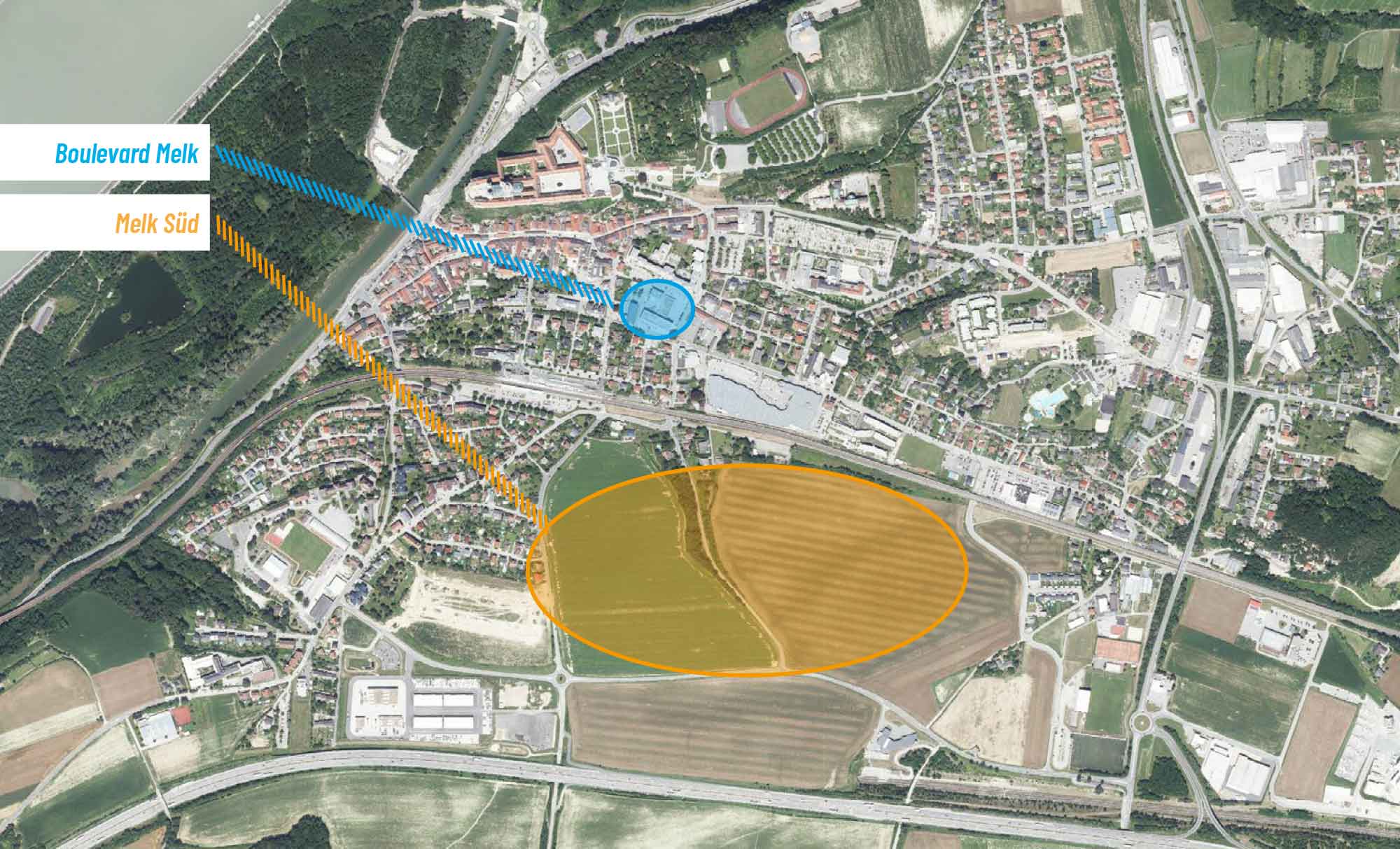With the slogan “Climate Fitness for Melk,” the municipality of Melk is establishing targeted initiatives to bring it closer to climate neutrality. The first steps were taken with the “Melk Solar Power Plant” project plus the founding of an energy community. For two urban development projects, the city launched an exploratory study1 to evaluate the necessary conditions as well as the required technical and organisational solutions for realising positive energy districts. The “Boulevard Melk” area is a small urban zone bordering on the historic old city with about 12,000 m2 of usable area that is primarily used for commercial purposes. The “Melk South” district is an urban development area with a usable area of about 350,000 m2. Starting in 2025, construction should begin here on residential units for 2,700 people.
Path to a positive energy district
The exploratory study examined the feasibility of positive energy districts for these two sites. One important goal was to raise awareness of the topic and improve the acceptance of measures to implement positive energy concepts through the active participation of the city of Melk as well as the property owners, investors and developers. In accordance with the goals and the needs of the involved actors, a requirements catalogue was developed for positive energy districts that defines the necessary building standards and the potential for renewable energy sources. The technical analysis of the districts was carried out in the form of spatial energy analysis, an assessment of the expected energy demand and an evaluation of the potential for photovoltaics. A positive energy balance sheet was created for both urban development areas. Potential business models (such as marketing via an energy community) were also evaluated. The results can be used in the further planning and implementation by policy-makers, city agencies, property developers and project developers.
Results of the analyses
Primarily commercial use is planned for the “Boulevard Melk” area. Key aspects of the planned construction projects were assessed in coordination with the city of Melk. The potential to cover the district’s electricity needs from renewable energy sources was evaluated. It was determined that in addition to the surfaces of the building envelopes more spaces must be utilised for the installation of PV modules in order to cover the full electricity demand. This is due to the energy-intensive businesses (e. g. restaurants, retail, etc.) to be located in this district. Various scenarios were studied for the “Melk South” area. The analysis took into account various building standards (from A/passive-house to D/heating demand of 25 kWh/m2 per year), the options for renewable energy (PV on roofs, plus façades, plus other surfaces), the heating supply (district heating, heat pumps) and relevant scopes of analysis (with and without e-mobility). If a high building standard is implemented along with a high share of renewable energy sources, the positive energy standard can be achieved in this district.One critical aspect of the analysis is the definition of the system boundary for a positive energy district. If, for example, the energy demand for mobility is not included in the calculations, a positive balance can also be achieved with lower requirements for the building standard. However, forward-looking concepts should always take into account mobility needs and solutions.
Next steps
In coordination with the city of Melk, a roadmap was created to plan the implementation of the positive energy districts. For Melk South, there is an interest in solutions for local heat and cold supply that take into account sources of waste heat. Furthermore, Melk now wishes to expand its focus to the entire city and work out a path to climate neutrality as well as the actions required for this.
nachhaltigwirtschaften.at/de/sdz/projekte/plus-energie-melk.php
1 Project partners: e7 Energie Markt Analyse GmbH (project coordination), municipality of Melk, Energy and Environment Agency of Lower Austria
